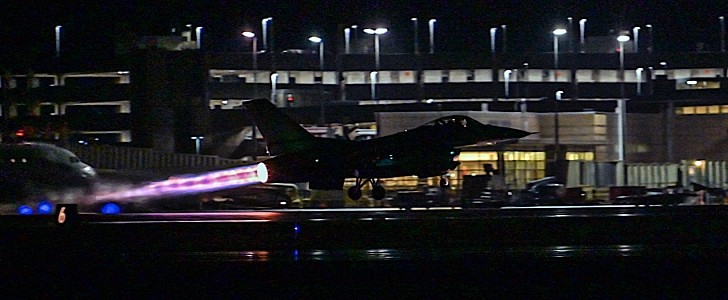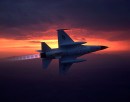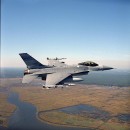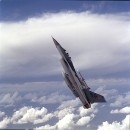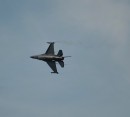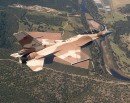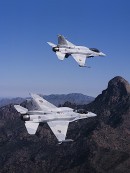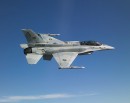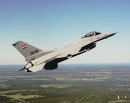Operators of military airplanes, especially American ones, don’t mind the machines being seen with the naked eye when in friendly skies. They even brag about the available hardware, with the U.S. Air Force for instance apparently having an entire army of people dedicated to snapping instances of warbirds in action.
The pic we have here (click main photo to enlarge) should have shown us an F-16 Fighting Falcon. And it does, only that you really have to strain your eyes to see what’s going on in there. In fact, if it weren’t for the purple-ish, long flame at the rear, coming from the roaring afterburner, we might have not even seen it. As is, we're faced with an instance that could make one think they’re faced with some kind of rocket launching horizontally.
And, for all intents and purposes, these things are rockets, only piloted, winged, and capable of landing after they’ve struck their targets. The engine at the back, either a General Electric or a Pratt & Whitney, depending on version, is capable of shooting the plane toward the enemy at speeds of two times the speed of sound, or 1,535 mph (2,470 kph).
The one we see here has not reached its top speed, of course, but enough of it to get itself off the ground. In this pic, it did so from Truax Field, Wisconsin, at the beginning of October, as part of 115th Fighter Wing’s (to which it belongs) deployment to the Middle East. The mission called for 300 airmen and a number of such F-16s to be sent to the Prince Sultan Air Base, Saudi Arabia, in support of U.S. Central Command operations.
The USAF, which proudly released the image recently, calls this type of night takeoff a night burn, and they couldn’t be more accurate.
And, for all intents and purposes, these things are rockets, only piloted, winged, and capable of landing after they’ve struck their targets. The engine at the back, either a General Electric or a Pratt & Whitney, depending on version, is capable of shooting the plane toward the enemy at speeds of two times the speed of sound, or 1,535 mph (2,470 kph).
The one we see here has not reached its top speed, of course, but enough of it to get itself off the ground. In this pic, it did so from Truax Field, Wisconsin, at the beginning of October, as part of 115th Fighter Wing’s (to which it belongs) deployment to the Middle East. The mission called for 300 airmen and a number of such F-16s to be sent to the Prince Sultan Air Base, Saudi Arabia, in support of U.S. Central Command operations.
The USAF, which proudly released the image recently, calls this type of night takeoff a night burn, and they couldn’t be more accurate.
